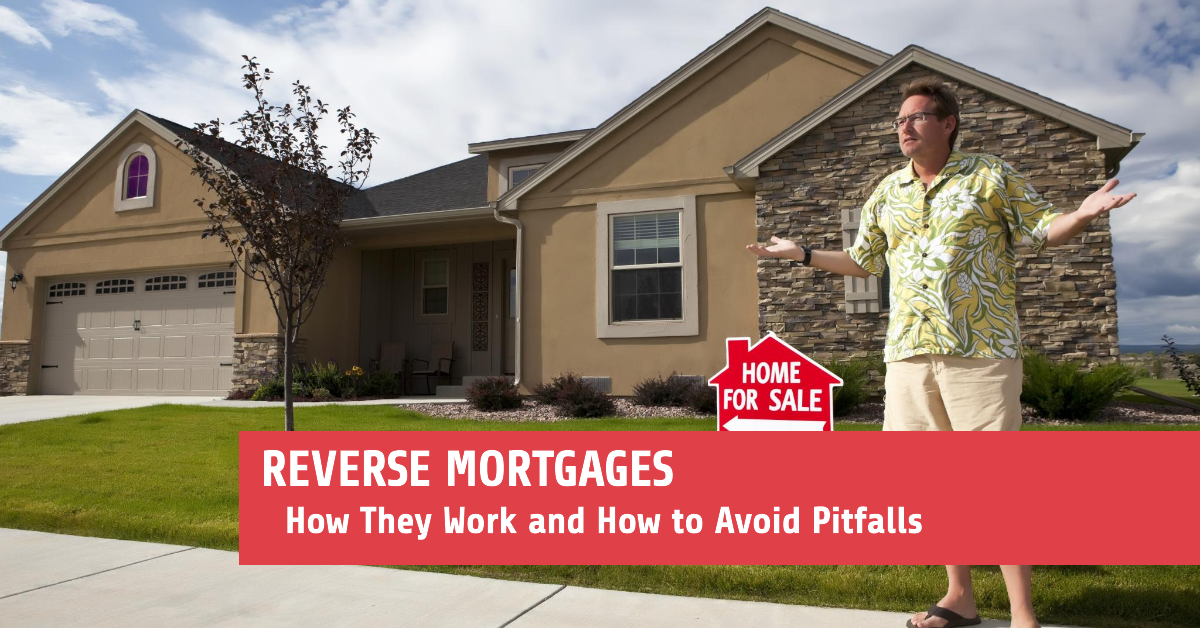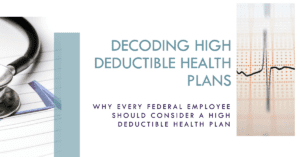Reverse Mortgages: How They Work and How to Avoid Pitfalls
Reverse mortgages offer a unique financial solution for seniors, allowing them to tap into the equity of their homes while still retaining ownership. This financial product can provide a lifeline for those in retirement, offering a steady stream of income, a lump sum, or a line of credit based on the home’s value. However, understanding the intricacies of a reverse mortgage, including how it works, the types available, and the pros and cons, can be complex. This article aims to explain reverse mortgages and key considerations to take into account when deciding if a reverse mortgage is right for you.
What is a Reverse Mortgage and How Does It Work?
Defining Reverse Mortgage: The Basics
A reverse mortgage is a type of loan that allows seniors to convert part of the equity in their home into cash without having to sell their home or face monthly mortgage payments. Instead of making payments to a lender, the reverse mortgage works by having the lender make payments to the homeowner. This reverse flow of funds is why it’s called a “reverse mortgage.” The homeowner can choose to receive these funds as a lump sum, monthly payments, or a line of credit.
How Seniors Can Take Out a Reverse Mortgage
Seniors looking to take out a reverse mortgage must first meet certain age requirements, typically being 62 years or older, and own a significant portion of home equity. The home must be the primary residence and not an investment property. To get a reverse mortgage, seniors must also undergo a financial assessment to ensure they can continue to pay property taxes and insurance.
Understanding the Reverse Mortgage Loan Process
The process of obtaining a reverse mortgage involves several steps including consultation with a reverse mortgage counselor, a financial assessment, and a property appraisal. After approval, seniors can choose how to receive funds. The loan balance does not have to be paid back until the homeowner moves out, sells the home, or passes away. At this point, the estate usually sells the home to repay the mortgage balance.
Types of Reverse Mortgages Available to Seniors
Exploring the Different Types of Reverse Mortgages
There are several different types of reverse mortgages, including the common home equity conversion mortgage (HECM), proprietary reverse mortgage, and single-purpose reverse mortgage. Each type has unique features and benefits. HECMs are federally insured and widely available, while proprietary reverse mortgages are private loans that may offer higher amounts. Single-purpose reverse mortgages are typically offered by state or local government agencies or non-profits for specific reasons.
Benefits of a Home Equity Conversion Mortgage
The home equity conversion mortgage (HECM) is the most common type of reverse mortgage. Offered by mortgage lenders and insured by the Consumer Financial Protection Bureau (CFPB), HECMs are subject to federal regulations designed to protect homeowners. These mortgages provide a wide array of options for receiving funds and can be used for any purpose, making them a flexible solution for seniors.
What is a Proprietary Reverse Mortgage?
A proprietary reverse mortgage, also known as a jumbo reverse mortgage, is a private loan not insured by the government. These are suited for homeowners with higher-valued properties that exceed the federally insured HECM lending limits. Proprietary reverse mortgages can offer larger loan amounts but come with less regulatory oversight.
How to Qualify and Apply for a Reverse Mortgage
Reverse Mortgage Requirements for Eligibility
To qualify for a reverse mortgage, seniors must meet certain criteria. These include age (typically 62 or older), sufficient home equity, the home must be the primary residence, and the owner must have the financial capability to pay ongoing property taxes and insurance. Eligibility may vary based on the type of reverse mortgage.
The Application Process for a Reverse Mortgage
The application process for a reverse mortgage involves consultation with a reverse mortgage counselor, filling out an application, and undergoing a financial assessment and property appraisal. This process ensures that seniors understand the reverse mortgage and that their financial situation aligns with the product’s requirements.
Understanding Mortgage Insurance and Property Tax Considerations
Mortgage insurance premiums are required for home equity conversion mortgages (HECMs) to protect both the homeowner and the lender. These premiums ensure that if the loan balance exceeds the home’s value at settlement, insurance will cover the difference. Homeowners are also required to keep up with property tax payments, which can significantly impact the amount available from a reverse mortgage.
Paying Back a Reverse Mortgage: What You Need to Know
Options for Repaying a Reverse Mortgage Loan
The repayment of a reverse mortgage loan is not required until the homeowner sells the home, moves out, or passes away. When one of these events occurs, the loan becomes due, and the home is usually sold to pay back the loan balance. However, heirs have the option to repay the loan balance without selling the home if they choose to keep it.
What Happens When You Sell the Home or Pass Away?
Upon selling the home or the passing of the homeowner, the reverse mortgage is settled by repaying the loan balance, including accrued interest and any mortgage insurance premiums. Any remaining equity in the home goes to the homeowner or their heirs, ensuring that the benefits of home equity are preserved.
Interest Rates and Mortgage Insurance Premiums
Interest rates for reverse mortgages are typically higher than for conventional mortgages due to the unique structure of the loan. Additionally, mortgage insurance premiums are required for HECM loans, which add to the overall cost. These costs are typically rolled into the loan balance and paid off when the loan is settled.
Pros and Cons of Reverse Mortgages for Seniors
Benefits of Taking Out a Reverse Mortgage
Reverse mortgages offer numerous benefits for seniors, such as the ability to tap into home equity without selling the property, flexible disbursement options (lump sum, monthly payments, or line of credit), and no monthly mortgage payments. They can provide financial freedom and security in retirement, allowing seniors to cover living expenses, medical bills, or home improvements.
The Drawbacks of Reverse Mortgages
Despite their benefits, reverse mortgages have drawbacks, including higher interest rates, mortgage insurance premiums, the eventual reduction of home equity, and the possibility of being removed from your home if certain requirements are not met. These factors can affect the homeowner’s ability to pass on the home as an inheritance and can lead to financial complexity for heirs.

The Pitfalls of Reverse Mortgages
Understanding the Risks and Alternatives
Reverse mortgages offer a unique financial solution for seniors, allowing them to tap into the equity of their homes while still retaining ownership. This financial product can provide a lifeline for those in retirement, offering a steady stream of income, a lump sum, or a line of credit based on the home’s value. However, understanding the intricacies of a reverse mortgage, including how it works, the types available, and the pros and cons, can be complex.
Risk of Losing Your Home & Being Removed
Many people think that with a reverse mortgage, the bank takes your home. But that’s not true. As long as you follow the loan rules, you still own your home. However, you could lose your home to foreclosure if you do not follow certain rules and requirements. We have listed the 5 main reasons a borrower could lose their home with a reverse mortgage.
1. Failure to Maintain Property Charges
If a reverse mortgage borrower fails to pay property taxes, the loan could be at risk of being called due and payable. Property taxes must be paid on time to keep the loan in good standing, as unpaid taxes could lead to a lien on the home. Some states offer resources to help homeowners cover property taxes, but it’s essential to stay informed about available assistance programs.
2. Failure to Maintain Homeowners Insurance
Reverse mortgage lenders require homeowners to maintain homeowners insurance to mitigate risks. Failing to keep up with insurance payments could jeopardize the loan and put the home at risk.
3. Failure to Maintain Home in Good Condition
Reverse mortgage borrowers are responsible for keeping their homes in reasonably good condition. Failure to meet FHA standards or allow the home to fall into disrepair could trigger foreclosure actions, forcing the borrower to leave the property.
4. Failure to Occupy Home as Primary Residence
Reverse mortgage terms stipulate that the home must remain the borrower’s primary residence for the loan’s duration. Moving out permanently or failing to maintain primary residence status could result in the loan becoming due and payable, potentially leading to foreclosure.
5. Non-Borrowing Spouses Must Be Disclosed
If the primary borrower passes away, and their spouse is not listed as a co-borrower or non-borrowing spouse, the surviving spouse could face foreclosure actions. It’s essential for all parties involved in the transaction to be disclosed to the lender to avoid complications in the future.
Eroding Equity and Inheritance
One of the primary drawbacks of a reverse mortgage is its impact on home equity. Unlike a traditional mortgage where equity typically grows over time, a reverse mortgage can rapidly deplete it. As the homeowner receives payments or a line of credit against the equity of the home, the loan balance increases, potentially surpassing the value of the property. This means there may be little to no equity left for heirs when the homeowner passes away or decides to sell the home.
High Costs and Fees
Reverse mortgages come with a myriad of fees and expenses, including origination fees, closing costs, mortgage insurance premiums, and servicing fees. These costs can significantly eat into the funds received from the loan, reducing its overall effectiveness as a financial solution.
Interest Accumulation and Loan Balance Growth
One of the most overlooked aspects of reverse mortgages is the accrual of interest on the loan balance. Since borrowers are not required to make monthly payments, the interest compounds over time, leading to a ballooning loan balance. This can rapidly erode the equity in the home and diminish the borrower’s financial stability.
Limited Eligibility and Restrictions
Reverse mortgages are not available to everyone. To qualify, homeowners must meet certain age requirements and have sufficient equity in their homes. Additionally, there are restrictions on the types of properties eligible for reverse mortgages, including primary residences and certain types of condominiums. These limitations can restrict access to this financial product for many individuals.
While reverse mortgages offer opportunities for accessing home equity, they also come with risks. Homeowners must stay informed about their obligations, including property charges, insurance, home maintenance, and occupancy requirements, to avoid potential pitfalls. Seeking guidance from financial professionals can help homeowners make informed decisions about whether a reverse mortgage is the right option for their financial situation.
Summary
While reverse mortgages may seem like an attractive option for seniors seeking additional income in retirement, they come with a host of risks and drawbacks that must be carefully considered. From eroding equity and high costs to interest accumulation and eligibility restrictions, the pitfalls associated with reverse mortgages are numerous and significant. Before pursuing this financial product, individuals should thoroughly assess their options, consider alternative solutions, and seek guidance from financial professionals to ensure they make informed decisions about their financial future.
Reach Out to Us!
If you have additional federal benefit questions, reach out to our team of CERTIFIED FINANCIAL PLANNER™ (CFP®) and Chartered Federal Employee Benefits Consultants (ChFEBC℠). At PlanWell, we focus on retirement planning for federal employees. Learn more about our process designed for the career federal employee.
Preparing for a federal retirement? Check out our scheduled federal retirement workshops. Sign up for our no-cost federal retirement webinars here! Make sure to plan ahead and reserve your seat for our FERS webinar, held every three weeks. Interested in having PlanWell host a federal retirement seminar for your agency? Reach out, and we can collaborate with HR to arrange an on-site FERS seminar.
Want to fast-track your federal retirement plan? Skip the FERS webinar and start a one-on-one conversation with a ChFEBC today. You can schedule a one-on-one meeting here.








